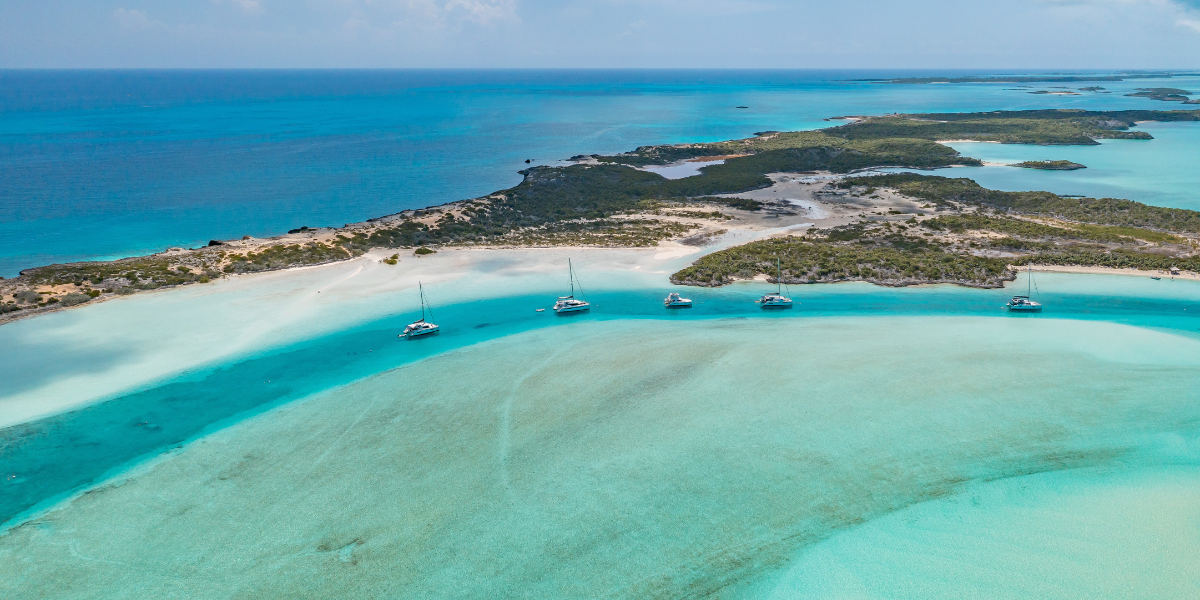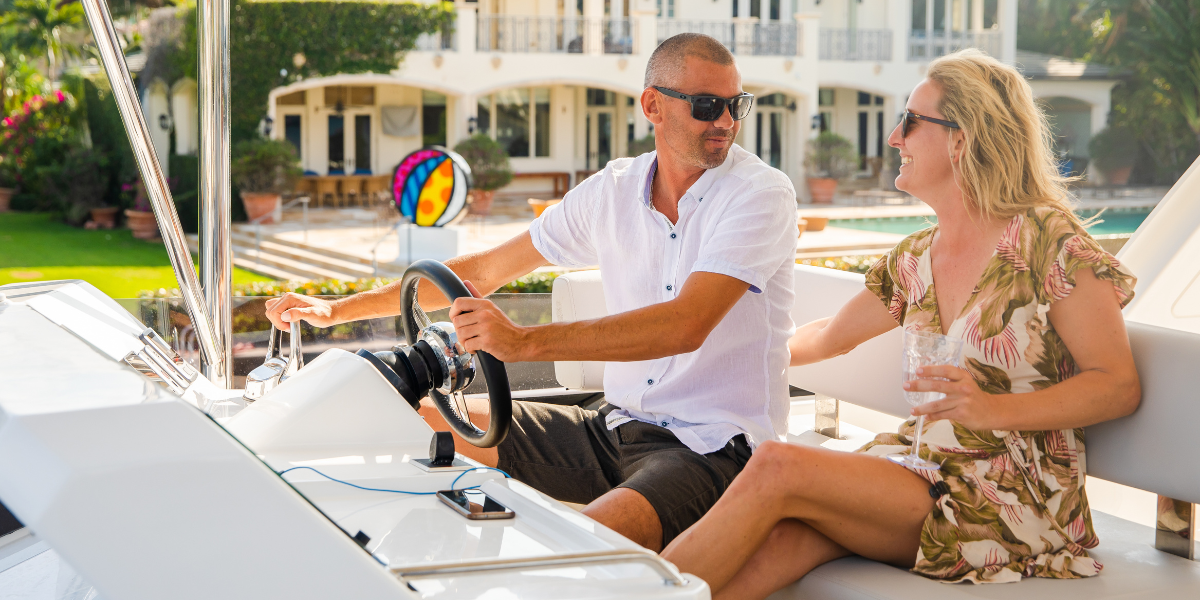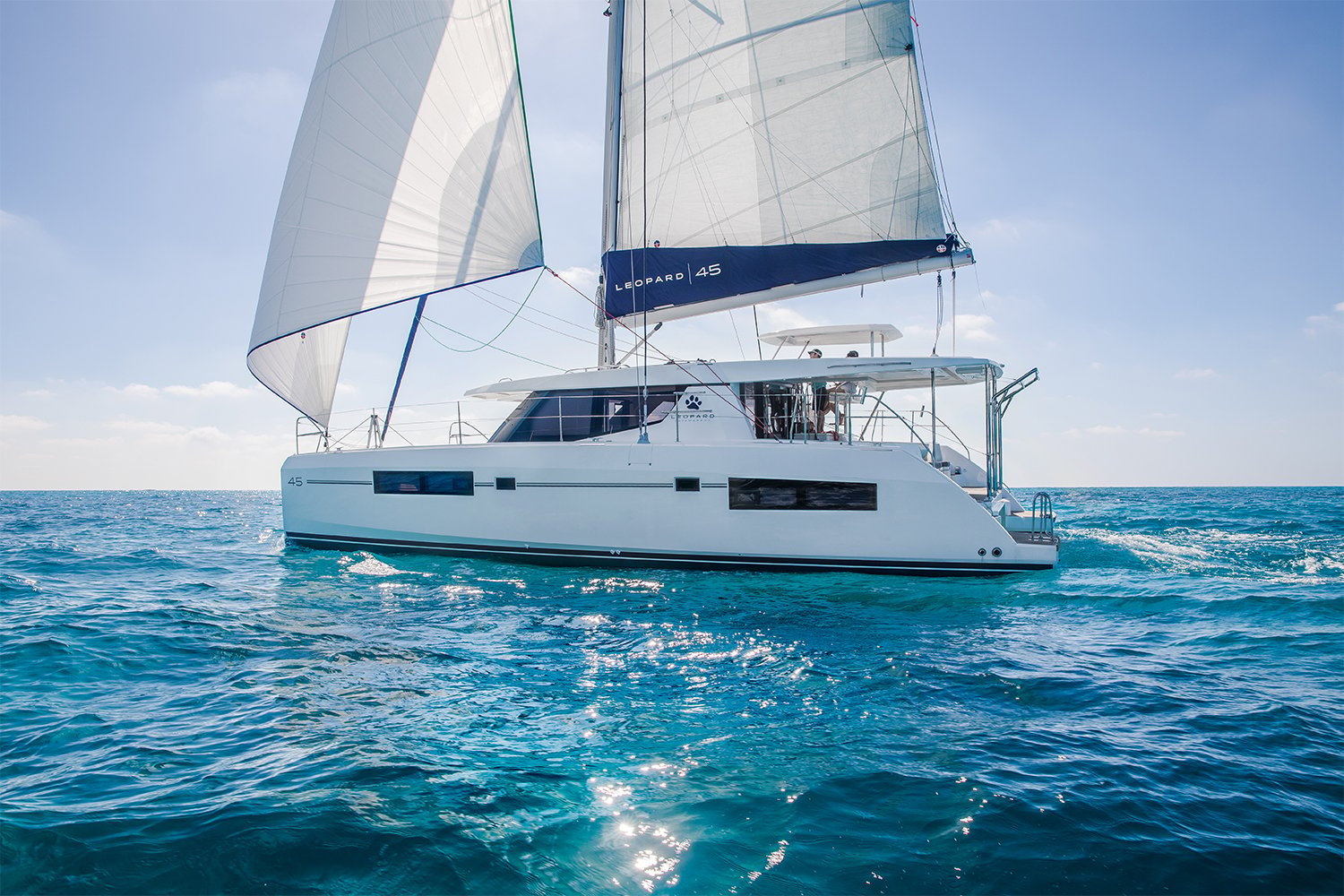When you first step on your new Leopard in Miami, you can't help but feel the urge to get up and go...somewhere. You've done the shakedown and the harbor cruise and maybe even explored a little of Biscayne Bay and watched the sunset at anchor. And you're ready for more.
The next step can be a jump off to the Bahamas, and if you plan well and take some care, you can day hop from Miami to the Exumas.
You'll need four days of sailing or motoring to get from Miami to Highbourne Cay in the Exumas without sailing at night. You don't have to do it on back-to-back days. In fact, you shouldn't. Every stop along the way has sights to see, gorgeous beaches, snorkeling, and places to visit on shore. So, plan to spend a couple of days between jaunts relaxing, exploring, and getting ready to move again while you look for optimal sailing weather.
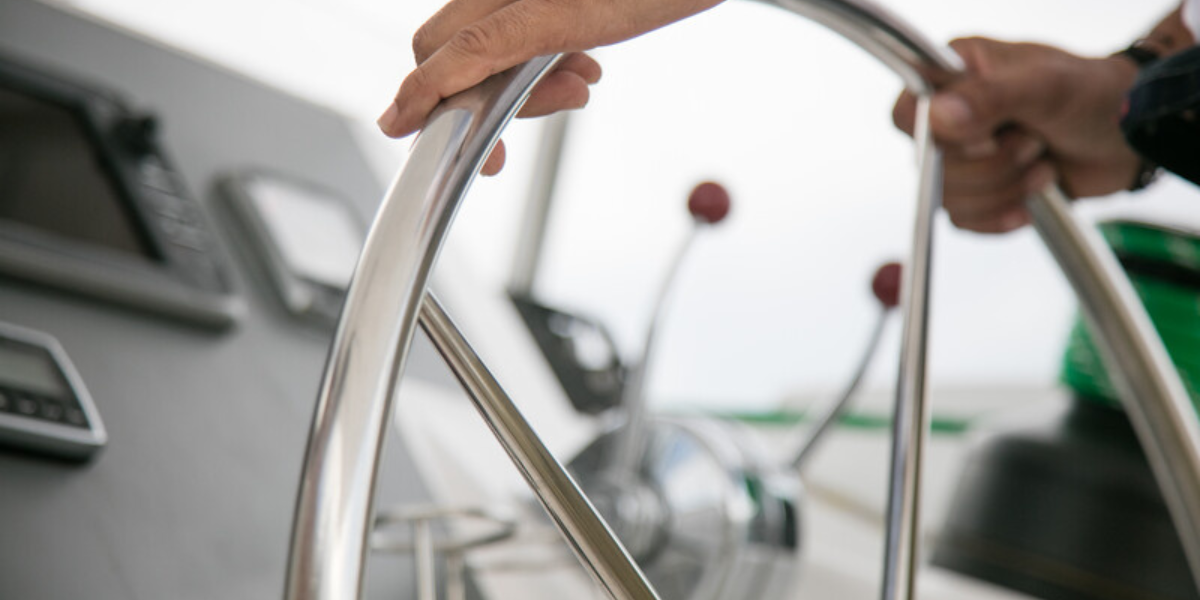
Your Itinerary
You'll set sail from Miami with a favorable wind forecast, and your boat provisioned with food and drink to hold you for the next week or more. Take each day as its own trip, with time to wait for favorable wind and weather.
- Miami to Bimini. Crossing the Gulf Stream, this 50-nautical-mile trip is relatively easy with the right weather.
- Bimini to Chub Cay. This is the longest day, a push to cover 85 miles during daylight.
- Chub Cay to Nassau. Thirty-five miles across deep water to the heart of the Bahamas.
- Nassau to Highbourne Cay. Cross the banks for 38 miles to the gateway to the Exumas.

Passage Planning
When heading offshore, plan for the worst and hope for the best. Be sure your fuel and water tanks are full, and you've got plenty of food. It's critical to plot your route early and take time to check the weather for several days ahead of your planned departure.
Expert delivery Paul Badenhorst plans his deliveries at six knots or a little over. Even though your boat can go faster, setting a reasonable target speed for your passages is a good idea. If you exceed them, great. But if you hit light winds, bad currents, or other problems, you'll leave yourself plenty of margin for safety.
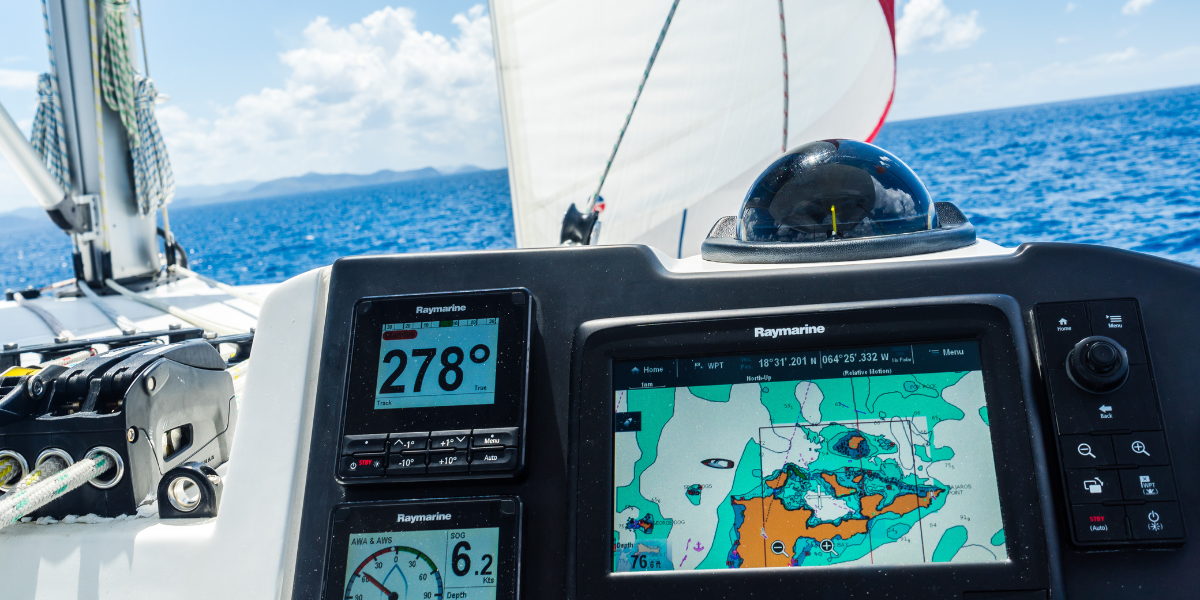
Leg One: Miami to Bimini
You should be able to journey from Miami to Bimini in about eight hours, whether sailing or powering. Plan for an early start, and you'll settle into Bimini for dinner. But here’s the catch - you have to cross the Gulf Stream.
The Gulf Stream is a strong, warm water current flowing north between mainland Florida and the Bahamas. The average speed is three knots but may reach six in the middle. If you don't account for it, it will sweep you miles off course.
On a good day, the Gulf Stream is a delight. The water is warm and a deep cobalt color like no other. It's full of fish and marine life, and it's just beautiful out there. But in the wrong conditions, it can be challenging and dangerous. And it will push you north about three miles for every hour you're in it. So you need to take care.
Wind versus Current
Any northerly wind blowing against the north-flowing Gulf Stream creates large, steep waves. Ensure there is no northerly component to the wind for twenty-four hours before crossing the Gulf Stream. Northwest, north, and northeast winds will all set up nasty and unsafe conditions, even if the sky is clear and the sun is shining.
The prevailing winds in winter are often easterly, and those aren't the best either since you're sailing straight into them. So, watching the wind a few days before your departure is essential. Look for that window when the wind is shifting through the south. Those can be tight windows, so give yourself several days of schedule padding to find the right day. And don't force it.
Current and navigation
The stream pushes you north at a three-knot average speed. In south Florida, the Gulf Stream is quite close to shore. Expect to spend 6-7 hours in the stream with an average speed of six knots. During this time, the stream could push you 18-20 miles north of your target if you don't plan and sail accordingly.
Plot your course across the stream assuming you're aiming at a point south of Bimini, and keep your boat headed in that compass direction. If you plan right, you'll sail the same compass heading most of the way and end up where you aimed. Otherwise, you'll end up motoring south into the current to get back to Bimini, and that's not fast.
The details necessary to plot your course are beyond the scope of this article, as the best way still uses paper plots and a bit of vector math. But we can direct you to a few guides. Consider using a professional weather router to help you plot an optimal course and find a good window for your first crossing.
The Keys Alternative
If getting swept north concerns you, you can get around this by leaving from further south in the Florida Keys. You get to take a delightful trip to the Keys and sail north to get to Bimini from there. So, your chances of overshooting with the Gulf Stream are much lower.
Gulf Stream Resources
Passage Weather has predictions for Gulf Stream velocity and wind conditions.
The Boat Galley has an excellent overview of planning a crossing, as does this piece from Cruising World.
Jennifer Clark's Gulf Stream has provided routing and crossing data to sailors for decades, and Chris Parker's Marine Weather Center is another routing service with extensive Caribbean experience. Either weather service will develop a course for your boat, find an optimal weather window, and offer an array of weather support packages available.
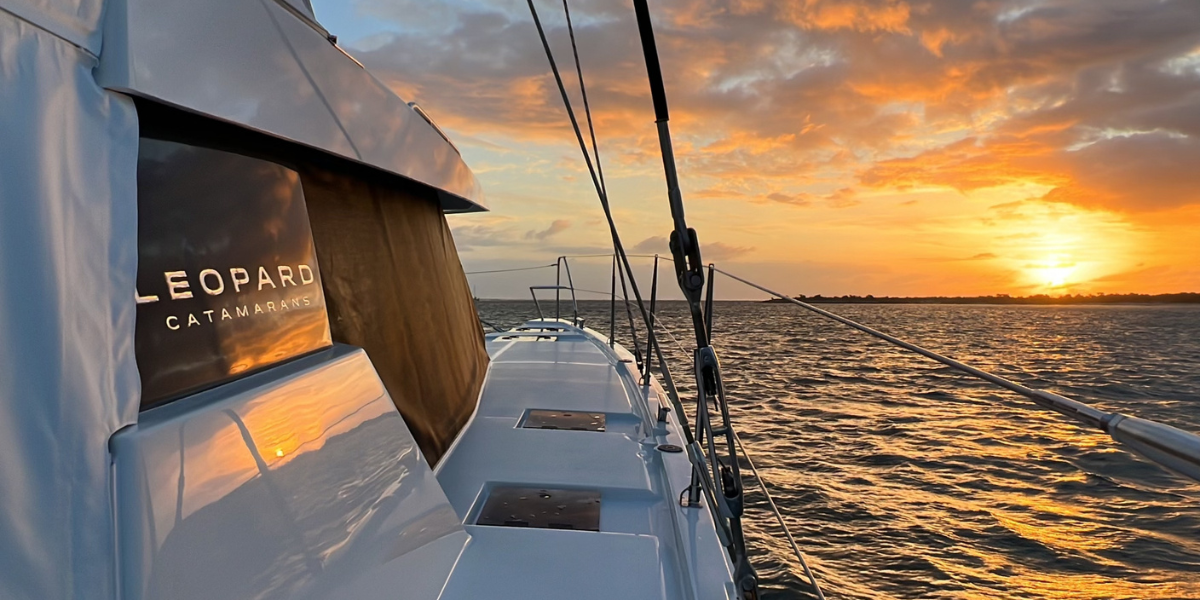
Leg Two: Bimini to Chub Cay
You must push your boat and yourself to make this 85-mile trip in daylight. It's better to plan at a slower speed, but for this day, you'll need to maintain 7.5 knots or faster to reach your destination during shorter winter days. You will probably be motoring hard and need to get up early.
Keep a close eye on the water, and wear polarized sunglasses. Even with a catamaran's shallower draft, there are shoals and coral to watch for.
Cast off by dawn and head north around Bimini towards North Rock. You'll want to stay north to clear the foul waters east of North Bimini until you turn for the mark at Mackie Shoal. Work your way east-southeast to the northwest channel, where the water will suddenly get deep. It's fourteen more miles from there until you anchor off Chub Cay.
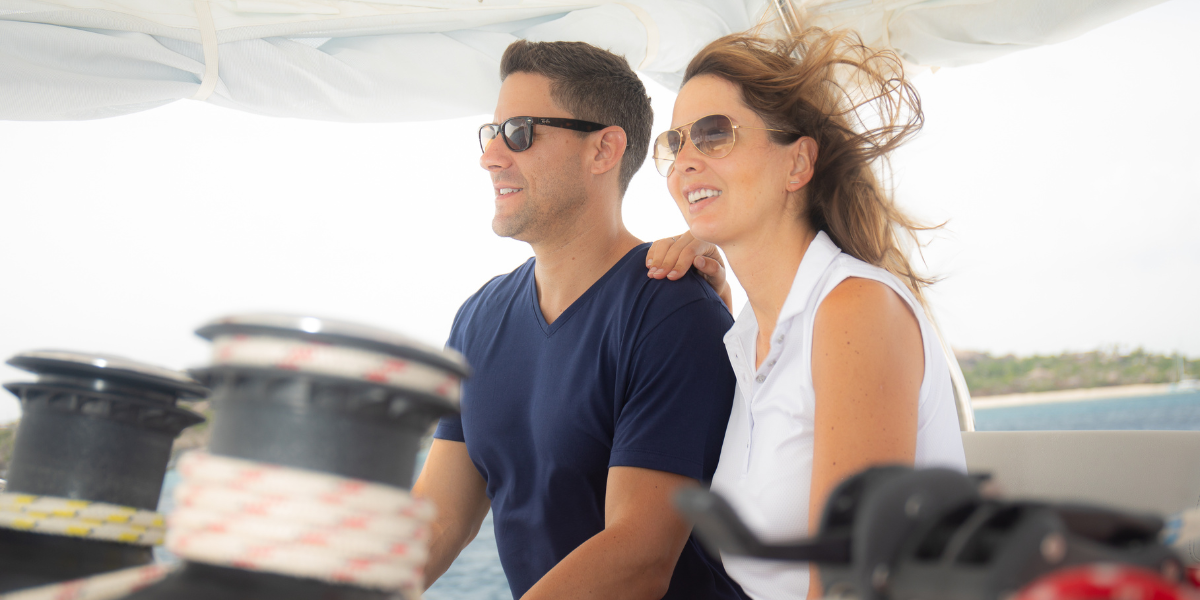
Leg Three: Chub Cay to Nassau
This 35-mile stretch of open water should be the easiest leg of the trip. Once you get away from Chub Cay, there is little to worry about until you get close to New Providence Island. Nassau Harbor is well-marked. You'll want to make a marina reservation before you arrive, although you can anchor in several places around the harbor.
This is also an excellent location to replenish your stores and supplies before heading to the Exumas.
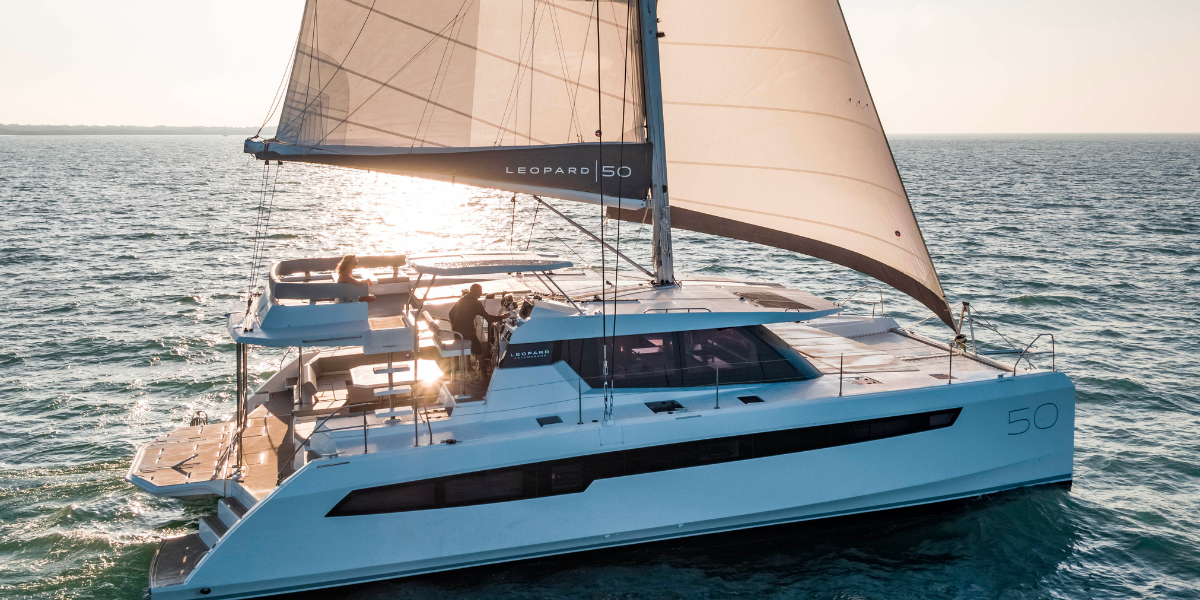
Leg Four: Nassau to Highbourne Cay
Your last day is just under 40 miles of sailing across middle-ground banks and shoals. It's better to leave a little later to give the sun time to get in the sky to help with visibility, spotting shallows, and obstructions.
Take care when crossing this stretch of water. Watch for coral obstructions and heads. Your crew should always be on the lookout for dark patches of water that signify coral heads. Give them a wide berth. Make this passage on a sunny day, and try to time it so you're near Yellow Bank at mid-day for the best visibility.
Heading east out of Nassau Harbor, pick your way down the channel between Athol Island. Then head south, keeping west of Yellow Bank and east of White Bank. Once past Yellow Bank, you can head more east-southeast and make straight for Highbourne Cay.
Cruising the Exumas
You did it! After four days of sailing, you have arrived — perched near the top of a chain of over 365 islands and cays. Highbourne Cay is the gateway to the Exumas and a great place to kick off your island exploration. The hardest part is over; now you're free to find your favorite white sand beach and your own bit of paradise.
